Exciting industrial opportunities of Holey Super Graphene
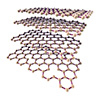 Super Holey Graphene enhances the already impressive properties of graphene, making it a significant breakthrough in materials science.
Super Holey Graphene enhances the already impressive properties of graphene, making it a significant breakthrough in materials science.

 Subscribe to our Nanotechnology Spotlight feed
Subscribe to our Nanotechnology Spotlight feed
 Super Holey Graphene enhances the already impressive properties of graphene, making it a significant breakthrough in materials science.
Super Holey Graphene enhances the already impressive properties of graphene, making it a significant breakthrough in materials science.
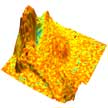 Taking advantage of its piconewton force and sub-nanometer displacement resolution, atomic force microscopy (AFM) is uniquely suited to measure nanoscale mechanical properties, especially when it comes to soft materials. Force spectroscopy is a useful nanomechanical technique to obtain both single point measurements and maps of important mechanical properties such as stiffness and adhesion. Cantilever and tip calibrations coupled with contact mechanics models enable the full analysis and interpretation of individual force curves.
Taking advantage of its piconewton force and sub-nanometer displacement resolution, atomic force microscopy (AFM) is uniquely suited to measure nanoscale mechanical properties, especially when it comes to soft materials. Force spectroscopy is a useful nanomechanical technique to obtain both single point measurements and maps of important mechanical properties such as stiffness and adhesion. Cantilever and tip calibrations coupled with contact mechanics models enable the full analysis and interpretation of individual force curves.
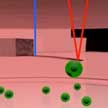 Atomic force microscopy (AFM) is one of the newer techniques available for virus research. AFM is a cantilever-based technique that utilizes a sharp tip to interrogate surfaces at resolutions well below the optical diffraction limit. Beyond imaging, AFM is also a powerful tool for nano-mechanical probing and nano-manipulation. One of the primary advantages of AFM is that it can operate on samples immersed in liquid. This empowers experiments on living cells at physiologically relevant conditions.
Atomic force microscopy (AFM) is one of the newer techniques available for virus research. AFM is a cantilever-based technique that utilizes a sharp tip to interrogate surfaces at resolutions well below the optical diffraction limit. Beyond imaging, AFM is also a powerful tool for nano-mechanical probing and nano-manipulation. One of the primary advantages of AFM is that it can operate on samples immersed in liquid. This empowers experiments on living cells at physiologically relevant conditions.
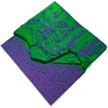 Kelvin probe force microscopy (KPFM), also known as surface potential microscopy, is one member of a suite of electrical characterization methods available in atomic force microscopes. It maps the contact potential difference between a surface and the cantilever, containing information about the surface potential and work function. KPFM is a surface-sensitive method that probes at and near the surface only. It is often used as a qualitative technique to obtain contrast based on the surface potential.
Kelvin probe force microscopy (KPFM), also known as surface potential microscopy, is one member of a suite of electrical characterization methods available in atomic force microscopes. It maps the contact potential difference between a surface and the cantilever, containing information about the surface potential and work function. KPFM is a surface-sensitive method that probes at and near the surface only. It is often used as a qualitative technique to obtain contrast based on the surface potential.
 Drawing attention to the possible implications of extreme weather does not answer the question what we can really do about the risks of climate change, and who will drive fresh solutions. Science - including nanotechnology - is an important part of the answer, and we need human ingenuity to step forward. To accelerate the process and help to push the boundaries of usable energy solutions, the Exergeia Project backs potentially groundbreaking inventions and innovations in all fields of alternative energy.
Drawing attention to the possible implications of extreme weather does not answer the question what we can really do about the risks of climate change, and who will drive fresh solutions. Science - including nanotechnology - is an important part of the answer, and we need human ingenuity to step forward. To accelerate the process and help to push the boundaries of usable energy solutions, the Exergeia Project backs potentially groundbreaking inventions and innovations in all fields of alternative energy.
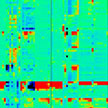 On September 15-16, 2014, come explore ways in which Alternative Testing Strategies (ATS) may be combined to create a Weight of Evidence (WOE) or 'multiple models' approach to inform context-specific decisions about risk from exposure to novel nanoscale materials. The goal is to advance a common understanding of the state of the science, early lessons, current opportunities, and next steps for developing ATS for use in decision making for nanoscale materials.
On September 15-16, 2014, come explore ways in which Alternative Testing Strategies (ATS) may be combined to create a Weight of Evidence (WOE) or 'multiple models' approach to inform context-specific decisions about risk from exposure to novel nanoscale materials. The goal is to advance a common understanding of the state of the science, early lessons, current opportunities, and next steps for developing ATS for use in decision making for nanoscale materials.
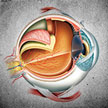 Defined as a clouding of the lens of the eye, cataracts affect more than 20 million people worldwide and accounts for 51 per cent of world blindness. In fact, this debilitating eye disease has been identified as the leading cause of blindness today. A multidisciplinary team of researchers is busy trying to understand the fundamental mechanisms of how the aggregates that cause cataracts form, and how nanotechnology may be used to prevent or at least inhibit them.
Defined as a clouding of the lens of the eye, cataracts affect more than 20 million people worldwide and accounts for 51 per cent of world blindness. In fact, this debilitating eye disease has been identified as the leading cause of blindness today. A multidisciplinary team of researchers is busy trying to understand the fundamental mechanisms of how the aggregates that cause cataracts form, and how nanotechnology may be used to prevent or at least inhibit them.
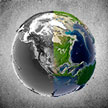 Concern about the depletion of global water resources has grown rapidly in the past decade due to our increasing global population and growing demand for other diverse applications. Since only 2.5% of the Earth's water is fresh, it has been reported that almost half of the world's population is at risk of a water crisis by the year 2025. Accordingly, significant research efforts have been focused on the desalination of brackish/seawater and the remediation and reuse of wastewater to meet the agricultural, industrial, and domestic water demands.
Concern about the depletion of global water resources has grown rapidly in the past decade due to our increasing global population and growing demand for other diverse applications. Since only 2.5% of the Earth's water is fresh, it has been reported that almost half of the world's population is at risk of a water crisis by the year 2025. Accordingly, significant research efforts have been focused on the desalination of brackish/seawater and the remediation and reuse of wastewater to meet the agricultural, industrial, and domestic water demands.